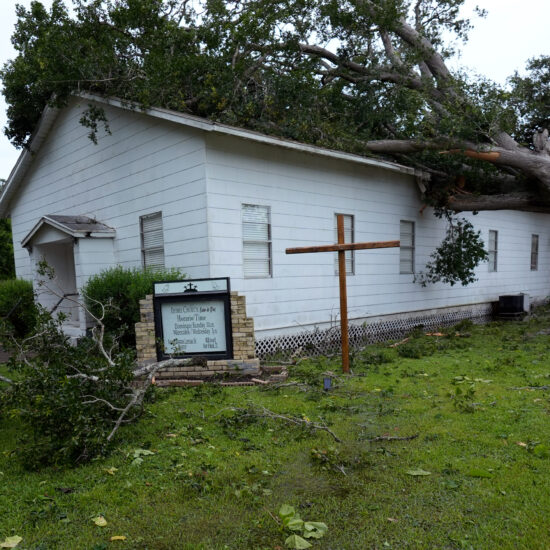
One of the jokes of 2021 was that no one made it through the pandemic without adopting a pet, buying an air fryer, having a kid, or growing plants. Social media feeds were full of new dog adoptions and sunny windows breaming with leafy greens. Charger was the first pandemic puppy that I met – a playful sheepadoodle that joined my brother’s family. He enjoyed trying to “herd” the cousins (playing into his instincts to care for livestock) and then laying lazily on your lap while getting an ear rub.

Sarah Blackwell
A short survey of my friends revealed a plethora of new additions including pandemic pups named Betsy, Kylie, Ted Lasso (Teddy), Blizzard, Presley Marie, Vada, Gretel, Finnegan, Poppy, Pickles, Duchess, and Nolle (Charger’s best dog friend), as well as cats named Tigger and Piper, bunnies named Daisy and Susan, and even some chickens (Jon, Janice, Lola, & the Lavender Ladies). All these cute pet pictures and gorgeous greens got me thinking, why in the midst of so much uncertainty and disruption did so many people choose to take on more responsibility? When we could barely function, paralyzed at times by fear or isolation or depression, why did we choose more work? I think the answer goes back to the beginning – the very beginning.
Our need to have our hands in the dirt and care for creatures is one of the first recorded instructions from God found in Genesis. Here God tasks humans with overseeing the “fish in the sea and the birds in the sky and… every living creature that moves on the ground” as well as the seed-bearing plants (Genesis 1:28). For centuries, humans spent most of their waking hours living out this cultural mandate by cultivating both plants and animals.
In the digital age, though, we became removed from other living things due to indoor offices, air conditioning, food from grocery stores, and urban living. It took the complete stoppage of our daily routines (that were centered on tending to other things like bank accounts, status, or authority) to be reminded of our first task. Something was awakened deep within us that connected us back to earlier times where our care for creation was much more direct and, frankly, necessary for survival. Why did God call us back to these tasks in our times of fear, isolation, and uncertainty? I believe, in a literal sense, they grounded us.
As we raced headlong into the unknown, we found comfort in the simplicity of daily tasks. The rituals and routines sustained us when we did not know if we could even get out of bed. Amanda Mull wrote in The Atlantic about her pandemic pup: “In a year when time felt slippery, Midge kept track of it – waking me up for breakfast, waging a nightly campaign for dinner, huffing and snorting and pacing until I got up from work to play fetch with her stuffed crocodile for a few minutes. Many days, she was the only living thing I spoke to, and the only one I touched.” We craved routine and connection, and these pandemic pets and plants often supplied both.
Much of the spiritual life is about dedication, commitment, steadiness, faithfulness, and even the mundane. It is what we do while waiting to hear from God. All of these qualities are developed within us as we care for our pets or plants. We set aside our personal choices and agree to do what needs to be done for something else. It harkens back to the monasteries and St. Benedict’s rule of work and worship, or horarium. This ordered structure between work and worship gave space for both sacred tasks. Within boundaries such as these, we are able to shape our lives with the daily rhythm of formation.

Charger
The second reason I believe we were drawn in droves to tend to creation was the lessons we could learn when we had time to slow down and actually observe. One the best gifts of the pandemic for me was a family of cardinals that decided to make their home under an outdoor umbrella on our back porch. Our family got to witness the building of the nest, the attentiveness of the male cardinal as he checked on the female while she sat on the nest, and the first chirps after hatching.
The best day by far, however, was flying lessons day. We knew the three babies were getting way too big to hang out in their nest together much longer. One day, all three were sitting on the table below the nest. We were not sure how they got there, but it was clear that they had no interest in going anywhere else. Thus, just like human parents might encourage a new walker, the bird parents tweeted out their best encouragement to join them in a magnolia tree about 10 feet away. The little birds cheeped back that they just could not do it. So, papa bird came to a nearby railing and showed them how to fly back and forth from the table to the rail; “Just like this!” he chirped to them. They flapped their little wings, but they remained unmoved from the table squawking about their doubts and fears.
Then, mama bird (doing what mamas do) brought the snacks. First, she sat on the rail with the snacks and tried to lure them over. Seeing that they were immobilized by uncertainty, she flew some snacks over to them to eat – maybe they were just hangry? Then she got more and flew back and forth, back and forth from the table to the rail and finally to the ground below. With the snacks now on the ground the birds cautiously ventured off the table and flew/fell down to their mama. With bellies full, they seemed ready to head for the rail, as if flying upward somehow seemed less scary. One by one, they made their way up to the rail and over to the tree as their parents vocalized repeatedly encouragement and support.
We were so sad to see our bird friends go, but so blessed by the opportunity to watch them care for their family. It was fun to catch glimpses of them in the yard over the next few weeks showing the young cardinals how to hunt for worms, eat from the bird feeder, and practice flying. When we watch the nurture within creation, we are reminded of the same concern that God has for us.
In Matthew 6, Jesus says we can gain confidence in God’s attentiveness by simply watching for the ways that nature is cared for like the provision of parent cardinals that feed, teach, and even encourage. Job, too, reminds us to look to creation to understand God better: “But ask the animals, and they will teach you; the birds of the air, and they will tell you; ask the plants of the earth, and they will teach you; and the fish of the sea will declare to you. Who among all these does not know that the hand of the Lord has done this?” (NRSV, Job 12:7-10). Like humans, God created these birds to be able to nurture and care for their offspring. The birds tend to their young because that is what God designed them to do. We, too, as God’s creation, are made to cultivate, to tend, to bring forth new life and sustain it.
According to the American Pet Products Association, 73% of millennials currently own a pet, which, if my memory serves me, is way more than are involved in a community of faith. It seems like the younger generations are being draw back to the cultural mandate of Genesis 1. However, there is no one to come alongside and tell them that their deep longing to care for creation may represent a spiritual void in their lives. Like Paul, speaking to the Athenians in terms they could understand, so too, must we try to talk about faith to the next generation in terms they understand. How can we, as communities of faith, encourage a recognition of creation care as spiritual practice? How can we encourage spiritual flourishing in the context of the creation others hold dear? Here are some suggestions for framing the care of those pandemic puppies and plants as an element of faith formation.
1) Hold a “Blessing of the Animals.” This community practice harkens back to St. Francis of Assisi who is said to have walk the streets and forests blessing the animals he encountered. As such, many Catholic and Episcopalian churches hold services to bless the animals during the feast of St. Francis in early October. Some even trace the practice as far back as ancient Judaism. This practice acknowledges the special part animals play in our homes and communities. On a practical level, it can be a great event for guests of a variety of ages and can be held outside in a less formal setting. Remember, pets are like family to many in our community. We should acknowledge them as such.
2) Start a community garden. As churches try to determine ways to steward their campuses better, a great way to build community, feed the hungry, and learn the practice of cultivation is to install a garden. You can also include neighbors who might want to maintain a plot of their own at the site. Another option is to set aside part of the campus as a certified wildlife habitat or pollinator garden.
3) Plant some trees. Join community members in a day of tree planting either on your church grounds, at members’ homes, or other community areas. In my local community, a non-profit named Trees Charlotte uses volunteers to plant more than 5,000 trees per year to maintain urban forests and the city’s tree canopy.
4) Create a prayer garden. People need sacred spaces. Many in our community may not enter the doors of a sanctuary, but they would walk a labyrinth or trail through a quiet place of rest and reflection. Prayer guides or scripture quotations throughout can be points of meditation and praise.
5) Include creation imagery in worship. Use those screens that show song lyrics to display photography or artwork depicting elements of creation. Encourage your members to take photos and then write a theological reflection on the item from creation. Collect member images and writings for others to reflect upon.
6) Clean up some trash. Sometimes allowing creation to flourish means getting rid of toxic things that might harm new life. Adopting a stream or road near your church can be a way to join your community in service and benefit the creation around you. Helping homebound members remove excess leaves from their yard can also help make room for new growth.
7) Plant during Lent. Use your Ash Wednesday service to put seeds in the ground. Encourage members to plant by sending home seeds or bulbs. Tending to the bulbs during Lent can prepare the heart for new growth under the surface. Flowers that grow by Easter could be used as part of a flowering cross.
8) Take worship outside. Spend more time outside as a family of faith to counteract the amount of time we spend indoors. Special services in parks or on your church grounds where people are allowed to bring pets may allow some people to feel more comfortable attending with their trusty friend by their side. It might even draw the attention of those walking by. Incorporate appreciation of nature into these services.
As faith communities, we must go out and meet people where they are. We should see them and know what is important to them. We need to reveal where God is present in the world and make connections to spiritual formation. Isaiah 40:11 reminds us of how the Lord cares for us: “He tends his flock like a shepherd: He gathers the lambs in his arms and carries them close to his heart; he gently leads those that have young.” In worshiping a shepherd Lord, it might help if we, too, were shepherds in our own little corner of the world. Like the Good Shepherd, we can nurture creation – even if as close as we ever get to herding actual sheep is playing with a sheepadoodle named Charger.
Sarah Blackwell is a contributing writer at Word&Way and a 2020 graduate of the Gardner-Webb School of Divinity. She is a former deacon and volunteers with youth and young adults at Providence Baptist Church in Charlotte, North Carolina. She did not get a pandemic pet, but she did ask for and receive a new bird feeder for her pandemic birthday. Follow her writings at proximitytolove.org.






